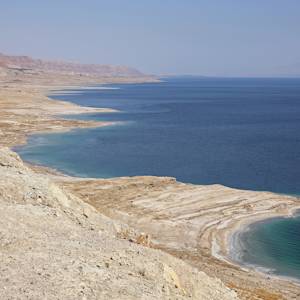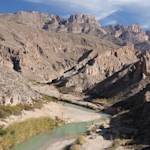Tigris and Euphrates Rivers
2023 CE • Western Asia
"From their sources in the mountains of eastern Turkey, the [Tigris and Euphrates] rivers flow through portions of Turkey, Syria and Iraq before converging at the Iraqi city of al-Qurnah to form the waterway known as the Shatt al-Arab and eventually discharging in the Persian Gulf . . . The river system lies in one of the longest continuously inhabited areas of the world. The ancient cities of Babylon, Uruk and Nimrud are several thousand years old, and the area is home to countless important locations in the holy scriptures of Jews, Christians and Muslims . . . The river system is also home to wildlife," such as cobra snakes, spiny eels, bull shark, Hilsa shad, and many species of carp. The Tigris and Euphrates "are subject to a variety of environmental threats. The freshwater supply of the Tigris and Euphrates has been dwindling, "two main causes of this decline are climate change and dam building." Between 2020 and 2021, there was a major reduction in waterflow as a result of severe drought and heatwaves: " 29% in the Tigris and 73% in the Euphrates. The water flow is expected to decrease even further, by 25% and 50% respectively by 2025."
Quote: Jakob Ollivier de Leth, "The Tigris and Euphrates in Iraq: ‘The Land Between Two Rivers’ Under Threat," Fanack Water, September 20, 2022. Brian Coad and Jennifer Hales, "Lower Tigris & Euphrates," FEOW.
Image: CharlesFred via Flickr, Attribution-NonCommercial-ShareAlike 2.0 Generic (CC BY-NC-SA 2.0)


Learn about Maya Lin’s fifth and final memorial: a multi-platform science based artwork that presents an ecological history of our world - past, present, and future.

Discover ecological histories and stories of former abundance, loss, and recovery on the map of memory.

Learn how we can reduce our emissions and protect and restore species and habitats – around the world.

See how art can help us rethink the problems we face, and give us hope that each one of us can make a difference.

Help make a global memorial something personal and close to home. Share your stories of the natural world.


